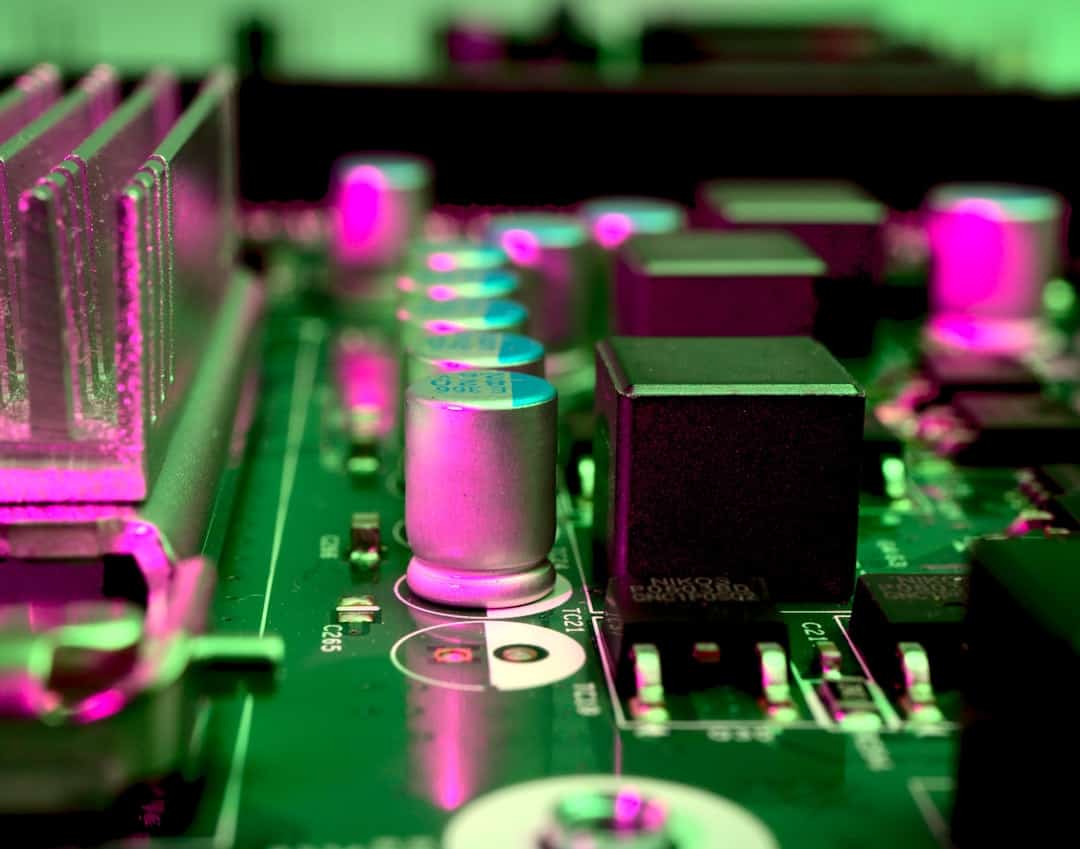Deep Neural Networks (DNNs) are advanced artificial neural networks consisting of multiple layers of interconnected nodes or neurons. These networks are designed to emulate the structure and functionality of the human brain, enabling them to process complex data and learn from it in a manner similar to human cognition. DNNs have become integral to modern technology, with applications spanning various fields, including image and speech recognition, natural language processing, and autonomous vehicle systems.
The popularity of DNNs has surged in recent years due to their capacity to handle vast amounts of data and extract meaningful patterns and insights. This capability has made them invaluable in sectors such as healthcare, finance, and marketing, where big data analysis is crucial for informed decision-making. Furthermore, DNNs have significantly advanced the field of artificial intelligence (AI), allowing machines to perform tasks previously thought to be exclusive to human intelligence.
Key Takeaways
- Deep Neural Networks (DNNs) are a type of artificial intelligence that mimic the way the human brain works, allowing for complex problem-solving and decision-making.
- DNNs have significantly advanced artificial intelligence (AI) by enabling machines to learn from data, recognize patterns, and make decisions without human intervention.
- DNNs are widely used in image and speech recognition technologies, allowing for accurate and efficient identification and interpretation of visual and auditory data.
- In natural language processing (NLP) and text generation, DNNs play a crucial role in understanding and generating human language, leading to advancements in chatbots, language translation, and content creation.
- DNNs are integral in the development of autonomous vehicles and robotics, enabling machines to perceive their environment, make decisions, and navigate without human input.
- In healthcare and medical diagnostics, DNNs are used for disease detection, medical imaging analysis, and personalized treatment recommendations, leading to improved patient care and outcomes.
- Ethical considerations and future implications of DNNs in modern technology include concerns about privacy, bias, and the potential impact on the job market, as well as the exciting possibilities for further advancements in AI and technology.
The Impact of DNNs on Artificial Intelligence (AI) Advancements
Enhanced Data Processing and Understanding
DNNs have enabled AI systems to recognize patterns in data, make predictions, and even generate new content, such as images, music, and text.
Breakthroughs in Deep Learning Algorithms
One of the most significant advancements in AI that has been made possible by DNNs is the development of deep learning algorithms. These algorithms are capable of learning from large amounts of data and making decisions based on that learning, without the need for explicit programming.
Major Advancements in Various Fields
This has led to major breakthroughs in fields such as computer vision, natural language processing, and robotics, where AI systems are now able to perform tasks with a level of accuracy and efficiency that was previously unattainable.
Applications of DNNs in Image and Speech Recognition

DNNs have had a profound impact on image and speech recognition technologies, revolutionizing the way that machines are able to understand and interpret visual and auditory information. In image recognition, DNNs have enabled machines to accurately identify objects, people, and scenes in photographs and videos, with applications ranging from facial recognition and object detection to medical imaging and autonomous vehicles. Similarly, in speech recognition, DNNs have allowed machines to transcribe spoken language with a level of accuracy that was previously unattainable.
This has led to the development of virtual assistants, such as Siri and Alexa, as well as advancements in language translation and voice-controlled devices. DNNs have also been instrumental in improving the accessibility of technology for individuals with disabilities, allowing for the development of tools that can convert speech to text and vice versa.
The Role of DNNs in Natural Language Processing (NLP) and Text Generation
| Metrics | Description |
|---|---|
| Perplexity | A measure of how well a probability distribution or probability model predicts a sample. |
| BLEU Score | A metric for evaluating the quality of text which has been machine-translated from one natural language to another. |
| Word Error Rate (WER) | A metric used to measure the performance of a speech recognition or machine translation system. |
| ROUGE Score | A set of metrics for evaluating automatic summarization and machine translation software in natural language processing. |
Natural Language Processing (NLP) is another area where DNNs have had a significant impact, enabling machines to understand and generate human language with a level of sophistication that was previously unattainable. DNNs have been used to develop language models that can understand the context and meaning of written text, leading to advancements in machine translation, sentiment analysis, and chatbot technologies. In addition to understanding language, DNNs have also been used to generate human-like text, with applications ranging from content creation and storytelling to code generation and automated customer service.
This has led to the development of language models such as GPT-3, which are capable of generating coherent and contextually relevant text based on a prompt provided by the user. These advancements have the potential to revolutionize the way that we interact with technology, making it easier for machines to understand and respond to human language in a natural and intuitive way.
DNNs in Autonomous Vehicles and Robotics
The role of DNNs in autonomous vehicles and robotics cannot be overstated, as these networks are essential for enabling machines to perceive and interact with their environment in real time. In autonomous vehicles, DNNs are used for tasks such as object detection, lane tracking, and decision making, allowing vehicles to navigate safely and efficiently without human intervention. This has the potential to revolutionize transportation, making it safer and more accessible for individuals around the world.
In robotics, DNNs are used for a wide range of applications, from object manipulation and navigation to human-robot interaction. These networks enable robots to perceive their environment, learn from their experiences, and adapt their behavior accordingly. This has led to advancements in fields such as manufacturing, healthcare, and space exploration, where robots are now able to perform tasks with a level of dexterity and precision that was previously unattainable.
DNNs in Healthcare and Medical Diagnostics

Enhanced Medical Imaging Analysis
DNNs are capable of analyzing medical images, such as X-rays and MRI scans, with a level of accuracy that rivals that of human experts. This has the potential to improve patient outcomes by enabling earlier detection and more precise treatment of diseases such as cancer and heart disease.
Personalized Treatment Plans
DNNs are also being used to analyze large amounts of medical data, such as patient records and genetic information, in order to identify patterns and insights that can inform personalized treatment plans. This has the potential to revolutionize the field of precision medicine, making it possible to tailor treatments to individual patients based on their unique genetic makeup and medical history.
Accelerating Medical Research and Drug Discovery
In addition, DNNs are being used to develop new drugs and therapies, accelerating the pace of medical research and drug discovery.
Ethical Considerations and Future Implications of DNNs in Modern Technology
As with any powerful technology, there are ethical considerations and future implications that must be taken into account when it comes to the use of DNNs in modern technology. One major concern is the potential for bias in AI systems that are powered by DNNs, which can lead to unfair or discriminatory outcomes for certain groups of people. It is essential for developers and researchers to address these biases and ensure that AI systems are fair and equitable for all individuals.
Another consideration is the potential impact of DNNs on the job market, as these networks have the potential to automate tasks that were previously performed by humans. While this has the potential to increase efficiency and productivity, it also has the potential to displace workers in certain industries. It will be important for policymakers and businesses to consider how best to support workers who may be affected by these changes.
Looking towards the future, there are many exciting implications for the continued development and use of DNNs in modern technology. These networks have the potential to revolutionize fields such as education, entertainment, and environmental sustainability, making it possible for machines to perform tasks with a level of intelligence and creativity that was previously unattainable. It will be important for researchers, policymakers, and industry leaders to work together to ensure that these advancements are used responsibly and ethically for the benefit of society as a whole.
If you’re interested in learning more about the regulatory landscape of metaverse platforms, you should check out this article on challenges and opportunities in the regulatory landscape. It provides valuable insights into the legal and regulatory considerations that are shaping the development of metaverse platforms.
FAQs
What is DNNs?
DNNs stands for Deep Neural Networks, which are a type of artificial neural network with multiple layers between the input and output layers.
How do DNNs work?
DNNs work by using multiple layers of interconnected nodes to process and learn from input data, allowing them to recognize patterns and make predictions.
What are the applications of DNNs?
DNNs are used in a wide range of applications, including image and speech recognition, natural language processing, and autonomous vehicles.
What are the advantages of DNNs?
Some advantages of DNNs include their ability to learn complex patterns from data, their flexibility in handling different types of input, and their potential for high accuracy in prediction tasks.
What are the limitations of DNNs?
Limitations of DNNs include the need for large amounts of labeled data for training, the potential for overfitting, and the computational resources required for training and inference.











Leave a Reply